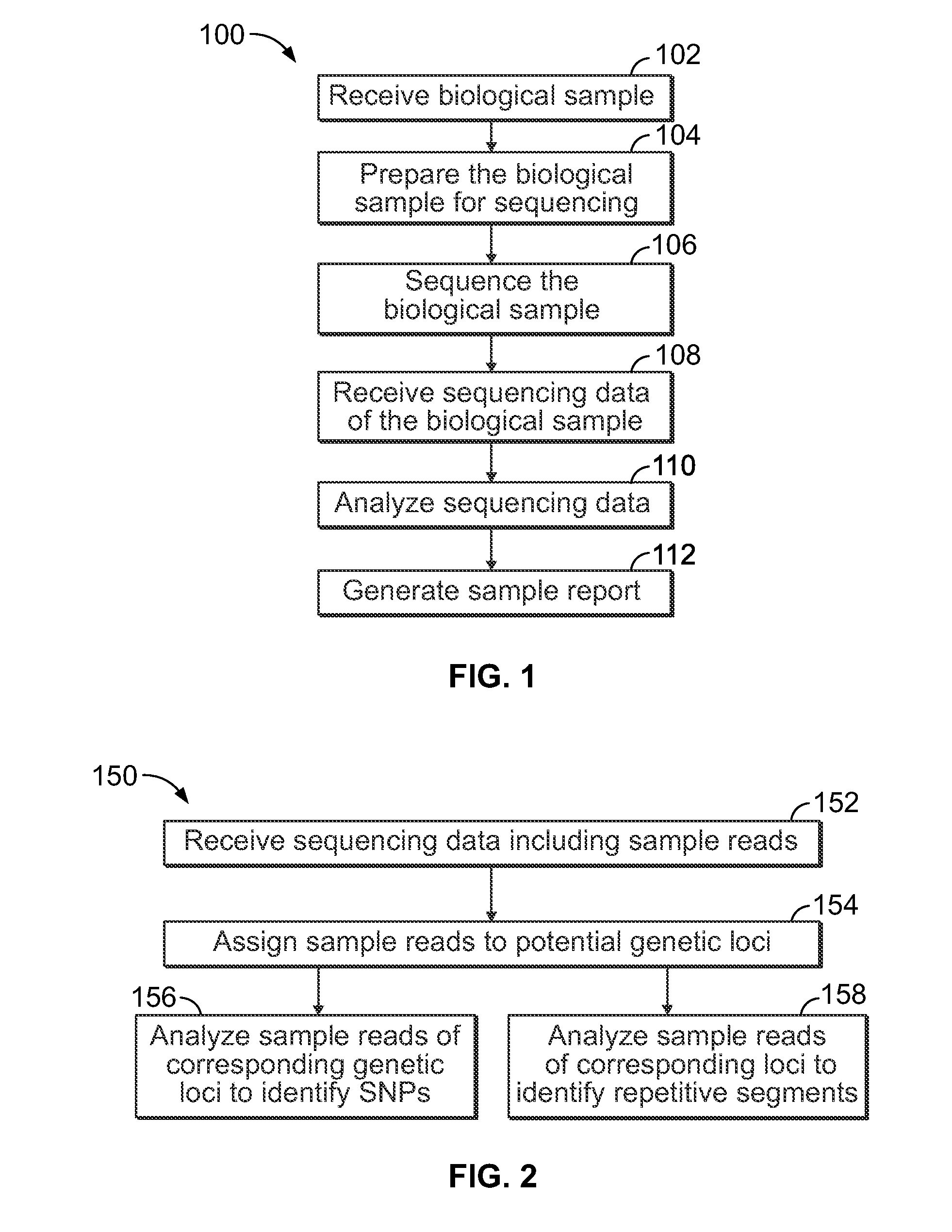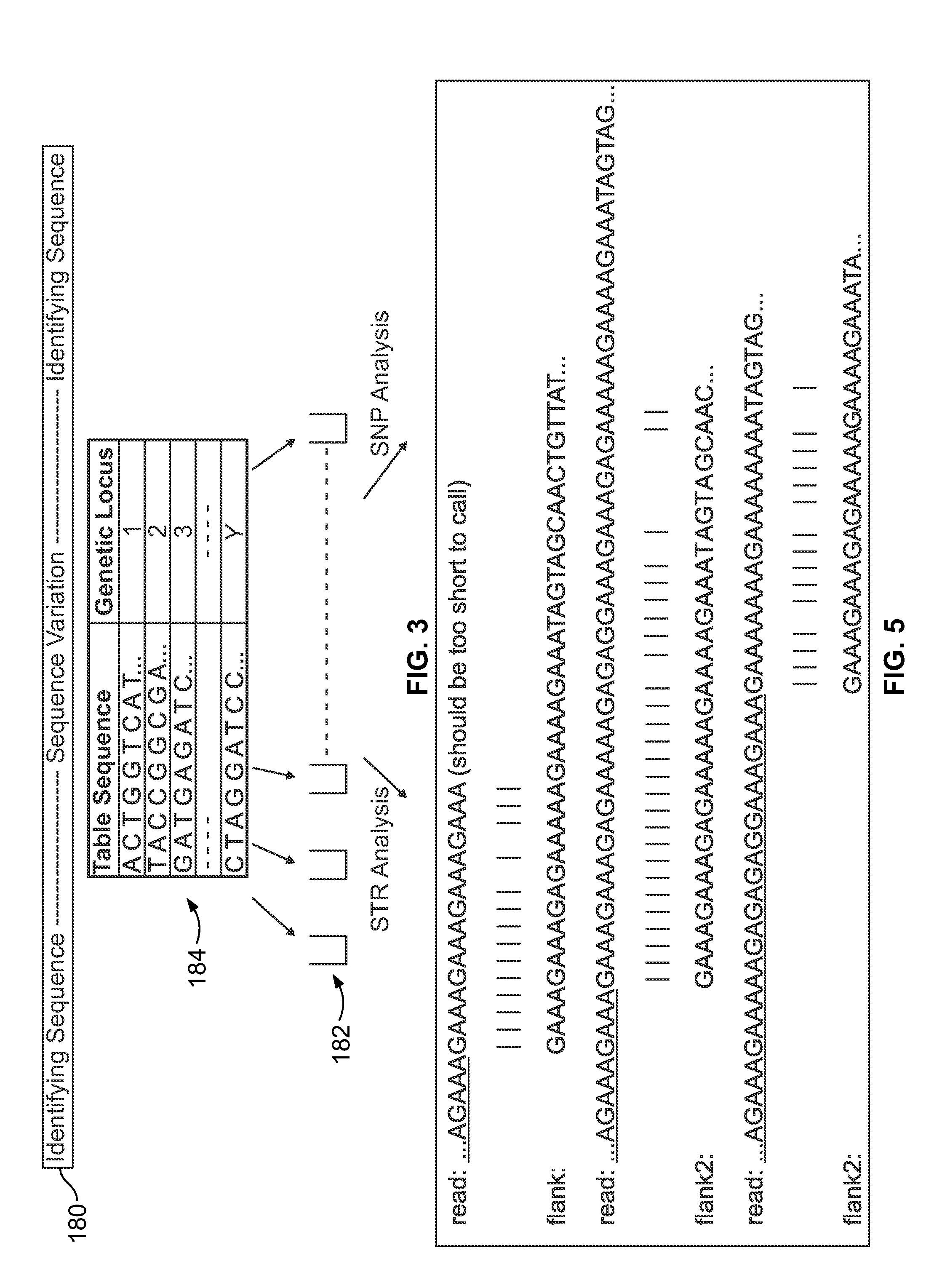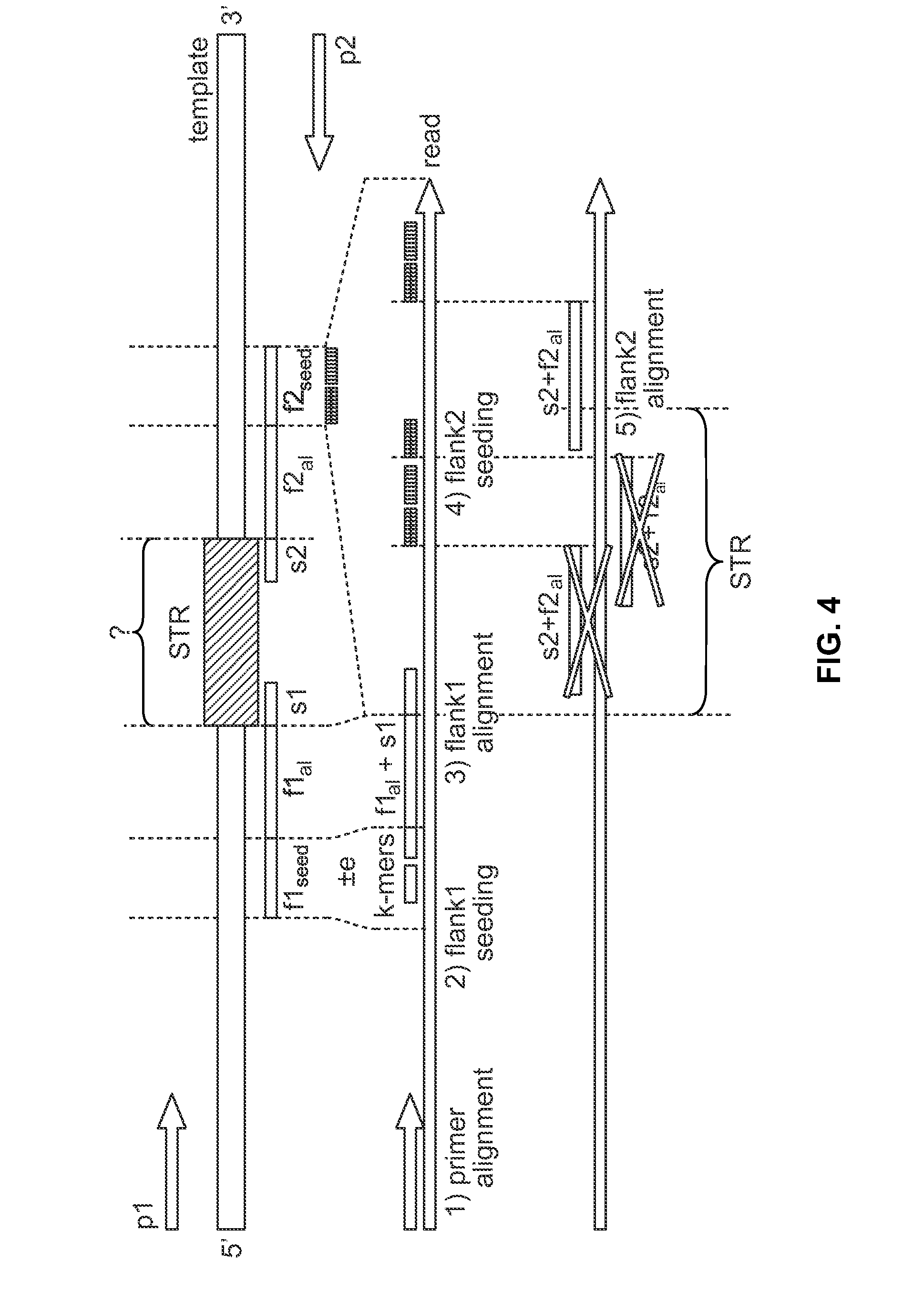Methods and systems for analyzing nucleic acid sequencing data
a nucleic acid and sequencing data technology, applied in the field of methods and systems for analyzing nucleic acid sequencing data, can solve the problems of unreliable corresponding data, and difficulty in ensuring the integrity of data
- Summary
- Abstract
- Description
- Claims
- Application Information
AI Technical Summary
Benefits of technology
Problems solved by technology
Method used
Image
Examples
example 1
Alignment of the Locus D18S51
[0102]This example describes alignment of the locus D18S51 according to one embodiment. Some loci have flanking sequences which are low-complexity and resemble the STR repeat sequence. This can cause the flanking sequence to be mis-aligned (sometimes to the STR sequence itself) and thus the allele can be mis-called. An example of a troublesome locus is D18S51. The repeat motif is [AGAA]n AAAG AGAGAG. The flanking sequence is shown below with the low-complexity “problem” sequence underlined:
GAGACCTTGTCTC (STR) GAAAGAAAGAGAAAAAGAAAAGAAATAGTAGCAACTGTTAT
[0103]If the flanking region immediately adjacent to the STR were used to seed the alignment, k-mers would be generated such as GAAAG, AAAGAA, AGAGAAA, which map to the STR sequence. This deters performance since many possibilities are obtained from the seeding, but most importantly, the approach creates mis-alignments, such as those shown in FIG. 5. In the sequences shown in FIG. 5, the true STR sequence is ...
example 2
Alignment of the Locus Penta-D by Short STR Sequence Addition
[0105]A set of Penta-D sequences tended to have STRs that were 1 nt shorter than expected. Upon further inspection, it was discovered that both flanks contained poly-A stretches and sequencing / amplification errors often removed one of the A's in those stretches. As shown in the sequence below, homopolymeric A stretches are found on both flanks.
. . . CAAGAAGAAAAAAAAG [AAAGA]n AAAAACGAAGGGGAAAAAAAGAGAAT . . .
[0106]A read error causing a deletion in the first flank would yield to two equally viable alignments:
read:. . . CAAGAAAGAAAAAAA-GA . . .flank:. . . CAAGAAAGAAAAAAAAG- (2 indels)read:. . . CAAGAAAGAAAAAAAGA . . . (2 mismatches)flank:. . . CAAGAAAGAAAAAAAAG
[0107]Enforcing the base closest to the STR to be a match did not work because one of the flanks in one of the STRs ended up having a SNP in it. It was discovered that adding just 2 nucleotides of the STR sequence solved the issue:
read:...CAAGAAAGAAAAAAA-GAAflank:...CAA...
example 3
Analysis of Mixture of DNA Samples
[0108]A mixture of samples was analyzed using the methods provided herein to make calls for each locus in a panel of forensic STRs. For each locus, the number reads corresponding to each allele and to each different sequence for that allele were counted.
[0109]Typical results are shown in FIGS. 6A-6D. As shown, the bar on the right of each pair represents the actual data obtained, indicating the proportion of reads for each allele. Different shades represent different sequences. Alleles with less than 0.1% of the locus read count and sequences with less than 1% of the allele count are omitted. The bar on the left side of each pair represents the theoretical proportions (no stutter). Different shades represent different control DNA in the input as indicated in the legend. In FIGS. 6A-6D, the x-axis is in order allele, and the Y axis indicates proportion of reads with the indicated allele.
[0110]As shown in the Figure, the STR calling approach using the...
PUM
 Login to View More
Login to View More Abstract
Description
Claims
Application Information
 Login to View More
Login to View More - R&D
- Intellectual Property
- Life Sciences
- Materials
- Tech Scout
- Unparalleled Data Quality
- Higher Quality Content
- 60% Fewer Hallucinations
Browse by: Latest US Patents, China's latest patents, Technical Efficacy Thesaurus, Application Domain, Technology Topic, Popular Technical Reports.
© 2025 PatSnap. All rights reserved.Legal|Privacy policy|Modern Slavery Act Transparency Statement|Sitemap|About US| Contact US: help@patsnap.com



